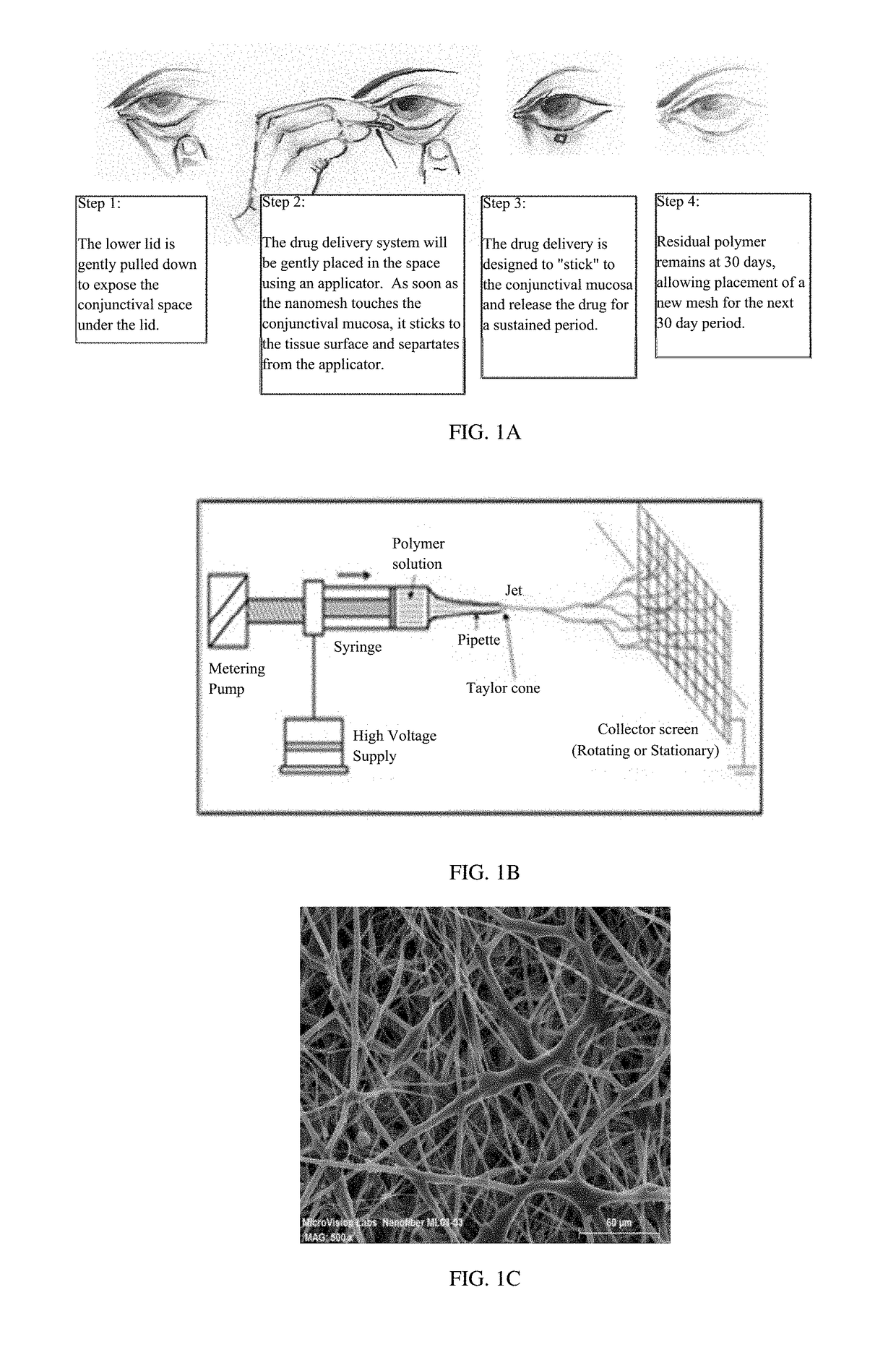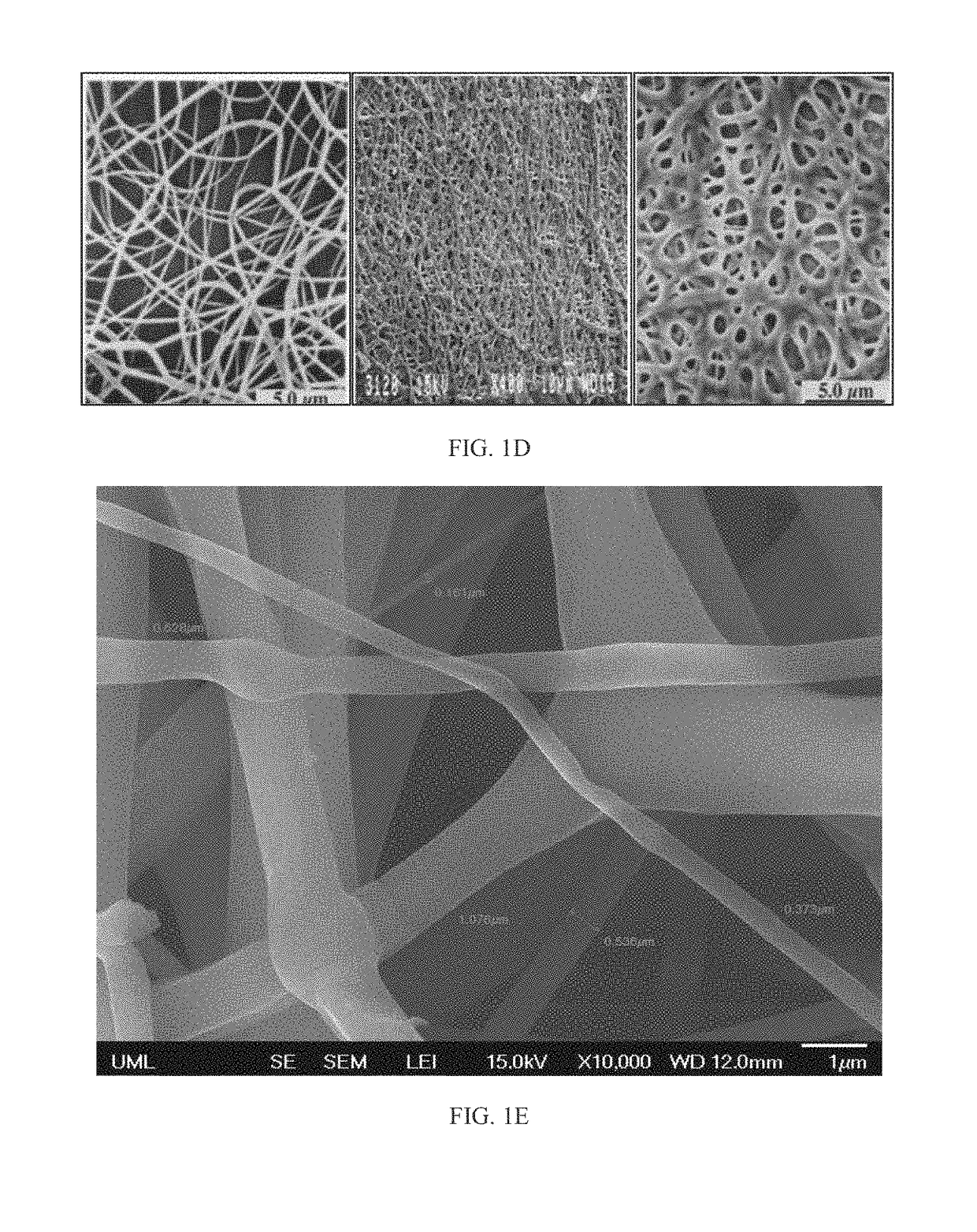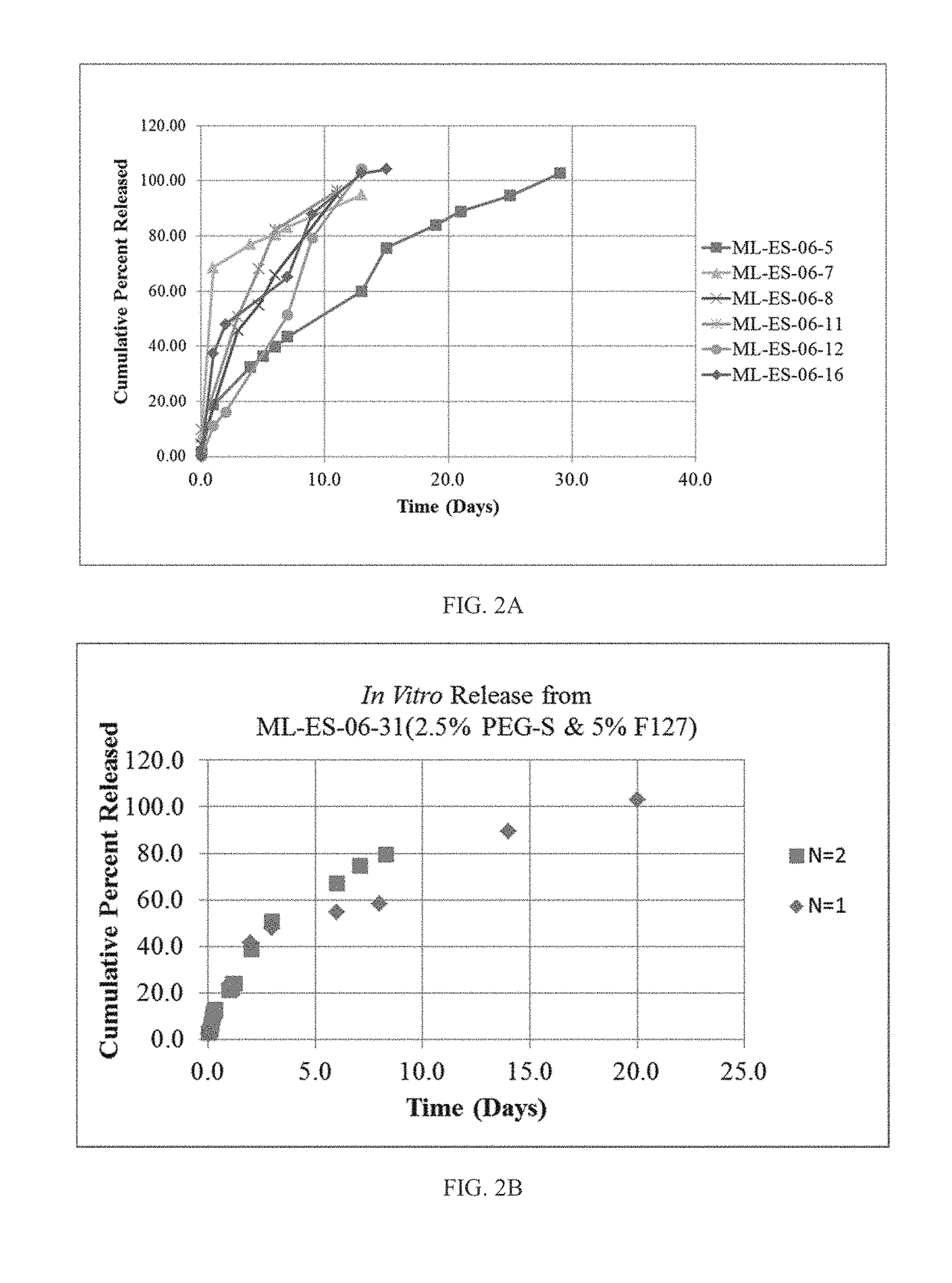Methods and biocompatible compositions to achieve sustained drug release in the eye
a biocompatible composition and eye drug technology, applied in the field of eye treatment, drug compositions, other medical devices, etc., can solve the problems of not being able to easily remove, maintaining refractive power, and significant technological challenges
- Summary
- Abstract
- Description
- Claims
- Application Information
AI Technical Summary
Benefits of technology
Problems solved by technology
Method used
Image
Examples
embodiments
[0055]Disclosed is a drug-containing nanostructured biodegradable, biocompatible, flexible mesh wafer that can be placed by a caregiver or a patient into the patient's conjunctival cul-de-sac (see FIG. 1A) to deliver a medication short-term or long-term. The drug release rate can be modulated to achieve therapeutic drug concentrations at the target tissue to persist for at least 1 week, 1 month, 2 months, 3 months or 6 months. The nanomesh wafer resulted from a bioengineering approach to administer medications to the eye, unlike the related art discussed above. The thickness of the nanomesh wafer, its flexural modulus, and its oxygen permeability are important aspects for long term biocompatibility, in addition to its sustained release profile and timely biodegradation. Additionally, the interconnected nano-sized pores and mesh structure of this drug delivery system are conduits for fluid flow in, around, and through the wafer, much like an extra-cellular matrix. This allows the waf...
example 1
Fabrication and Characterization of Nanomesh Wafer Containing Travoprost
Fabrication
[0153]In this example, drug-loaded nanomesh wafers were prepared by electrospinning. This process makes use of electrostatic and mechanical force to spin fibers from the tip of a fine spinneret (See FIG. 1B). The spinneret is maintained at positive or negative charge by a DC power supply. When the electrostatic repelling force overcomes the surface tension force of the polymer solution, the liquid spills out of the spinneret and forms an extremely fine continuous filament. The dry mesh thus produced is porous and flexible, allowing it to be cut to a desired size. Raw materials were travoprost (Cayman Chemicals), PLGA RG503H (Evonik), PEG40-Stearate (Sigma-Aldrich), PEG3.35K (Carbowax), F127 (Spectrum), and PVP (Plastone, ISP).
[0154]Factors that control mesh properties are process conditions, molecular weight, conductivity of the solution, pH of the solution, distance from the tip to the collector and ...
example 2
Biocompatibility Screening of Prototypes
[0166]In-vitro eye irritation testing of three nanomesh wafer prototypes were tested for eye irritation using three-dimensional corneal tissue constructs purchased from Mattek Corporation, MA. Three nanomesh wafer prototypes were contact-exposed to the corneal tissue constructs using a published protocol. See Kandarova et al., Toxicology Letters 211, Supplement, 17 Jun. 2012, pages S111-S112, the content of which is incorporated herein in its entirety.
[0167]More than 60% cell viability is classified as “NI” (non-irritating). It was observed that the maximum thickness of a wafer should be no more than 0.5 mm to be non-irritating.
PUM
 Login to View More
Login to View More Abstract
Description
Claims
Application Information
 Login to View More
Login to View More - R&D
- Intellectual Property
- Life Sciences
- Materials
- Tech Scout
- Unparalleled Data Quality
- Higher Quality Content
- 60% Fewer Hallucinations
Browse by: Latest US Patents, China's latest patents, Technical Efficacy Thesaurus, Application Domain, Technology Topic, Popular Technical Reports.
© 2025 PatSnap. All rights reserved.Legal|Privacy policy|Modern Slavery Act Transparency Statement|Sitemap|About US| Contact US: help@patsnap.com



